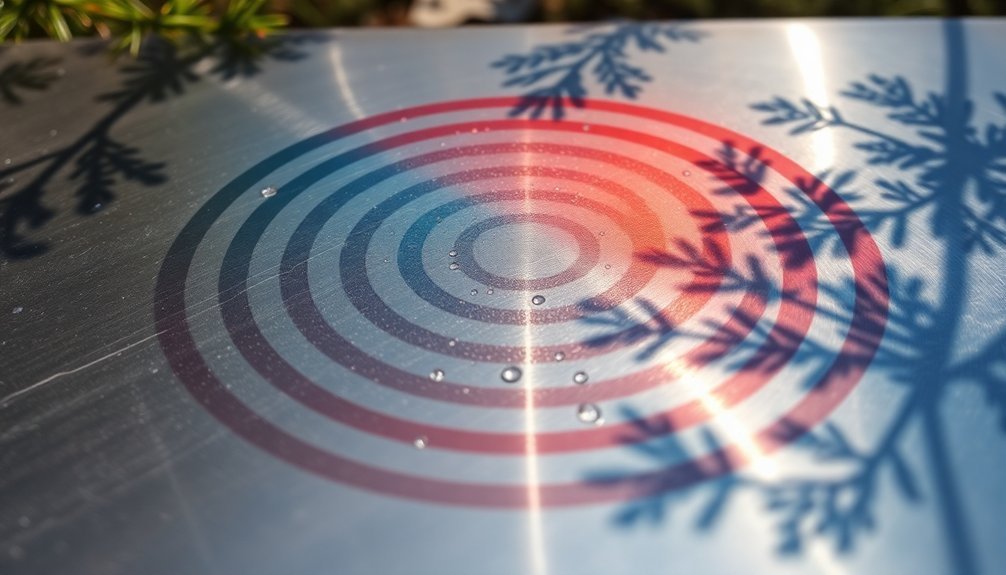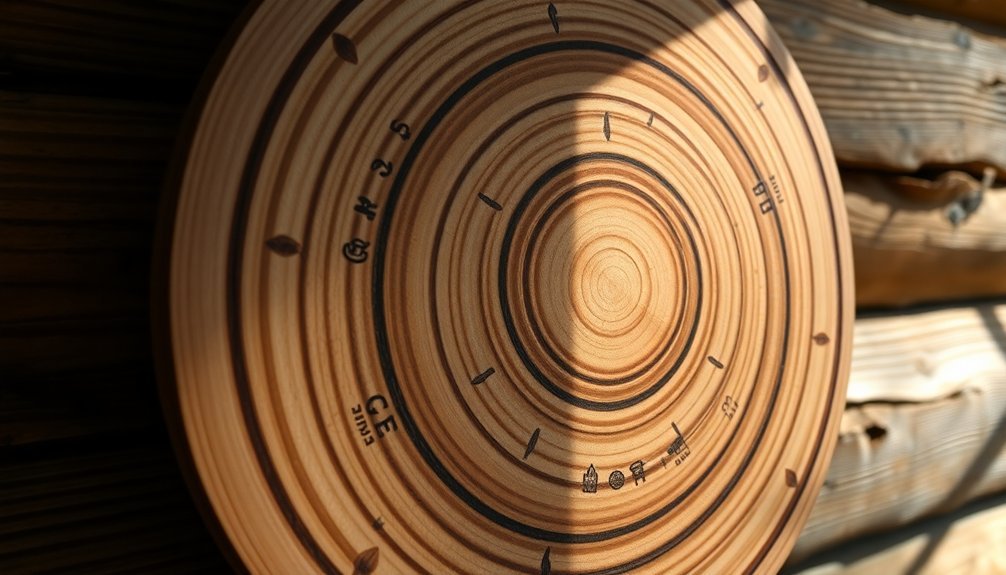For off-grid solar cooking, you’ll need to adjust standard recipe temperatures by about 25-50°F lower since solar ovens cook more slowly and evenly. Box cookers typically reach 150-400°F, panel cookers hit around 250°F, and parabolic cookers can exceed 800°F. When converting regular oven recipes, plan for longer cooking times – generally 1.5-2 times longer than conventional methods. Keep dark cookware at hand, as it absorbs heat better, and consider using oven bags to retain warmth. Your location and altitude will also impact temperatures, with higher elevations offering more efficient solar cooking. Understanding these temperature variations will help you master the art of solar cooking techniques.
Solar Oven Temperature Basics

When exploring solar oven cooking, understanding temperature ranges and capabilities is essential for successful off-grid meal preparation.
You’ll find that different types of solar ovens reach vastly different temperatures, from basic box cookers at 160-200°F to powerful parabolic models exceeding 800°F. Most home cooks work with box-style ovens like the All-American Sun Oven, which maintains temperatures between 325-350°F, making it suitable for typical baking needs. The best cooking times occur during peak sun hours between 11:00 a.m. and 3:00 p.m.
You’ll need to think about several factors that affect your solar oven’s performance. Location plays a vital role – southern areas closer to the Equator provide more consistent cooking conditions. Wind can impact your oven’s temperature substantially, so you’ll want to choose a sheltered spot.
To maintain the best temperatures, you’ll need to regularly adjust your oven’s position to track the sun’s movement throughout the day.
The key to maximizing your solar oven’s efficiency lies in proper setup and maintenance. Using black pots, air-tight bags, and effective insulation helps retain heat. You’ll achieve the best results by tilting the oven and reflectors to match the sun’s angle, ensuring your cooker reaches and maintains its thermal equilibrium point.
Converting Standard Recipes
To successfully adapt standard recipes for off-grid cooking methods, you’ll need to master temperature and timing conversions.

When using a Dutch oven, you can achieve 350°F with a ring of coals on top and bottom. Remove every other briquette underneath to lower it to 300°F, or add a second ring on top to reach 400°F. Rotating the Dutch oven every 10 minutes ensures even heat distribution throughout cooking.
For grill cooking, you’ll work with different heat zones. Low heat ranges from 325-375°F for slow cooking, while medium heat stays between 350-375°F, perfect for poultry and roasts. Medium-high heat (375-450°F) and high heat (450-650°F) are ideal for direct grilling and searing. When you need intense heat for quick-searing steaks, use incendiary heat above 650°F.
To adjust cooking times, calculate the temperature difference percentage. As a rule, every 10-20°F increase reduces cooking time by 5-10%. Use this formula: New Time = Initial Time * (Start Temp / End Temp).
When scaling recipes, divide your desired servings by the original amount to get your conversion factor. Then multiply each ingredient by this factor, converting decimals to fractions for precise measurements.
Seasonal Temperature Adjustments

Understanding seasonal changes will transform your off-grid cooking success. You’ll need to adapt your cooking temperatures and techniques based on weather conditions, particularly during cold seasons. When temperatures drop, you’ll want to increase your base cooking temperature, but be careful on extremely cold days where you should decrease by 190°F to maintain ideal smoking conditions.
Wind direction substantially impacts your temperature control and fuel usage. Position your cooker to work with the wind rather than against it. During precipitation, you’ll need to open vents and increase temperature to compensate for moisture effects. The stainless steel construction ensures consistent heat distribution even in challenging weather conditions.
| Season | Temperature Adjustment | Cooking Technique |
|---|---|---|
| Winter | Increase base temp | Use 3/4 coals on top |
| Spring | Standard temp | Equal coal distribution |
| Summer | Decrease base temp | More coals underneath |
| Fall | Slight increase | Adjust for wind direction |
For Dutch oven cooking, modify your coal placement based on your cooking method. Use more coals underneath for frying and simmering, while placing 3/4 of coals on top and 1/4 underneath works best for baking and roasting. You’ll find that fall and winter are ideal for slow-cooked meals, but you’ll need to maintain a steady coal supply and monitor temperatures more closely.
Altitude Effects on Solar Cooking
Altitude plays a crucial role in solar cooking efficiency, with higher elevations offering distinct advantages. When you’re cooking at higher altitudes, you’ll benefit from a 7-12% increase in solar power output due to reduced atmospheric filtering.
This means your solar cooker will work more effectively in places like Nepal and Tibet, where the thinner air allows more direct sunlight to reach your cooking surface. Well-insulated cookers can maintain high cooking temperatures even in these cold, high-altitude environments.
You’ll find that altitude combines with latitude to affect your solar cooking success. If you’re at a higher elevation near the equator, you’ll get the best of both worlds: intense solar rays and consistent year-round sunlight.
Desert margins and high-altitude regions typically offer more than 6 hours of direct sunlight daily, making them ideal for solar cooking activities. On clear days, you can expect your solar cooker to perform efficiently for extended periods.
However, you’ll need to account for weather conditions even at high altitudes. While elevation improves solar intensity, scattered clouds can still impact your cooking time.
For the most efficient solar cooking, look for locations that combine high elevation with consistent clear skies and direct sunlight.
Weather Impact on Cooking Times

When you’re cooking in hot weather or direct sunlight, your grill will run hotter than the set temperature, requiring shorter cooking times. Conversely, cold temperatures slow down ignition and require more fuel to maintain proper heat.
High humidity actually speeds up cooking as moisture keeps surface heat high, while low humidity requires longer cooking times due to rapid moisture evaporation. At higher elevations, you’ll need to account for lower boiling points and adjust cooking times accordingly.
Wind poses a particular challenge, causing temperature swings and potentially extinguishing your flame. You’ll want to position your grill away from direct wind exposure and monitor temperatures closely.
Rain and high humidity can slow ignition and create unstable cooking conditions, making it harder to maintain consistent temperatures.
To guarantee reliable results, cook to temperature rather than time, and adjust your approach based on weather conditions. Using a grill cover between cooking sessions will protect your equipment and help maintain consistent performance by preventing weather-related damage and rust.
Frequently Asked Questions
How Do Nighttime Temperature Drops Affect Food Stored in Outdoor Cooking Equipment?
Your stored food can cool rapidly at night, increasing spoilage risk. You’ll need to monitor temperatures closely and use insulation. If you’re storing cooked food, make certain it’s properly covered and maintained above safe temps.
Can I Use Multiple Heat Sources Simultaneously for More Consistent Temperatures?
Yes, you can combine different heat sources like solar ovens, Dutch ovens, and propane stoves to maintain steady temperatures. Stack your cooking equipment and monitor each source carefully for ideal temperature control.
What’s the Best Way to Maintain Temperature When Moving Food Between Cooking Stations?
Keep food covered and move quickly between stations. You’ll want to preheat your next cooking surface, use insulated containers, and minimize transfer time to maintain consistent temperatures during the changeover process.
How Do Different Wood Types Affect Temperature Control in Outdoor Cooking?
You’ll find hardwoods like hickory cause more temperature fluctuations, requiring frequent adjustments. Fruitwoods and alder provide steadier heat, while charcoal offers the most stable temperatures for your outdoor cooking needs.
Should Cooking Times Change When Using Cast Iron Versus Aluminum Cookware Outdoors?
Yes, you’ll need longer cooking times with cast iron because it heats up slower than aluminum. However, once hot, cast iron retains heat better, so you’ll need fewer temperature adjustments during cooking.
In Summary
You’ll find solar cooking to be highly adaptable once you understand temperature conversions and environmental factors. Keep this chart handy as you adjust your recipes for solar ovens, and don’t forget to account for seasonal changes and altitude differences. While it may take practice, you’ll soon be able to confidently cook off-grid by making smart temperature adjustments based on weather conditions.





Leave a Reply